This content contains affiliate links. When you buy through these links, we may earn an affiliate commission.
Books impact us. They have the power to transform our perspective, allow us to see or find ourselves, and provide the opportunity to explore people and ideas that might be unfamiliar to us. That is precisely why books have been subject to censorship and targeting since the founding of America. What censors target with books aren’t the physical or digital objects themselves. They target the ideas and the people those books represent. The fight for the freedom to read and freedom from book bans is a fight for inclusivity.
Although they are the most frequent victims of book banning and though they should not be put in the place to have to fight for their right to read, teens have been on the front lines of this censorship battle from the beginning too. Indeed, today’s teens are among some of the biggest voices and most powerful forces pushing back against censorship. We’ve seen this since early 2021 as teens began showing up to school board meetings to address the impact of books being removed. We’ve seen it in teens like those at Central York who staged two protests, years apart, at the start of the school day. We’ve seen teen-led groups pop up nationwide with the goal of ending book bans and ensuring their diverse stories aren’t erased. Other teens have stood up in response to book bans at their school by creating little banned libraries�recognition of which has itself been censored�and through exhausting every avenue possible before ultimately electing not to shake an administrator’s hand at graduation.
Some teens have even developed their own banned books clubs. These are opportunities for them to read the books that are creating moral panic among adults and to discuss what’s in them�and where and how they themselves want to respond.
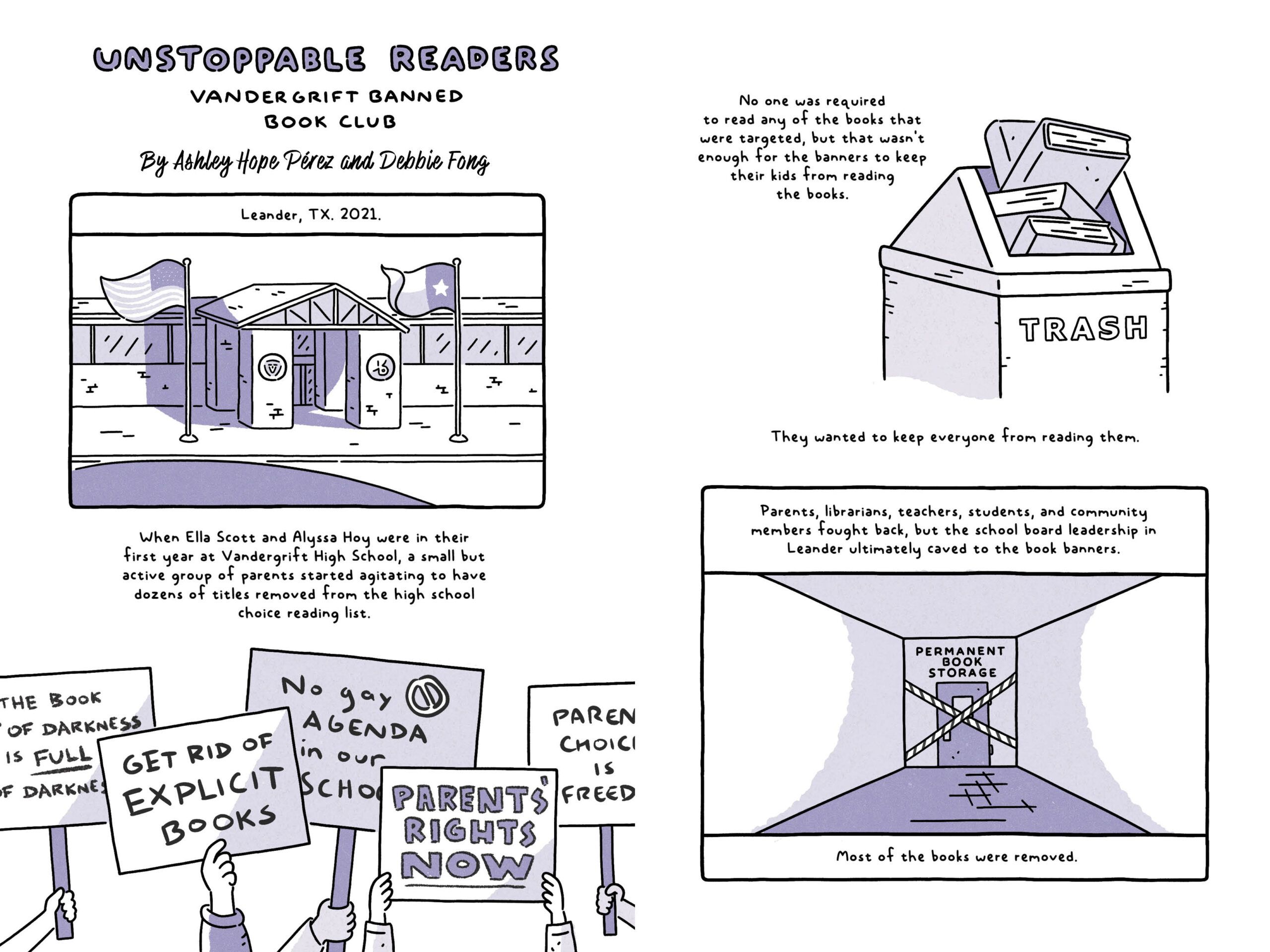

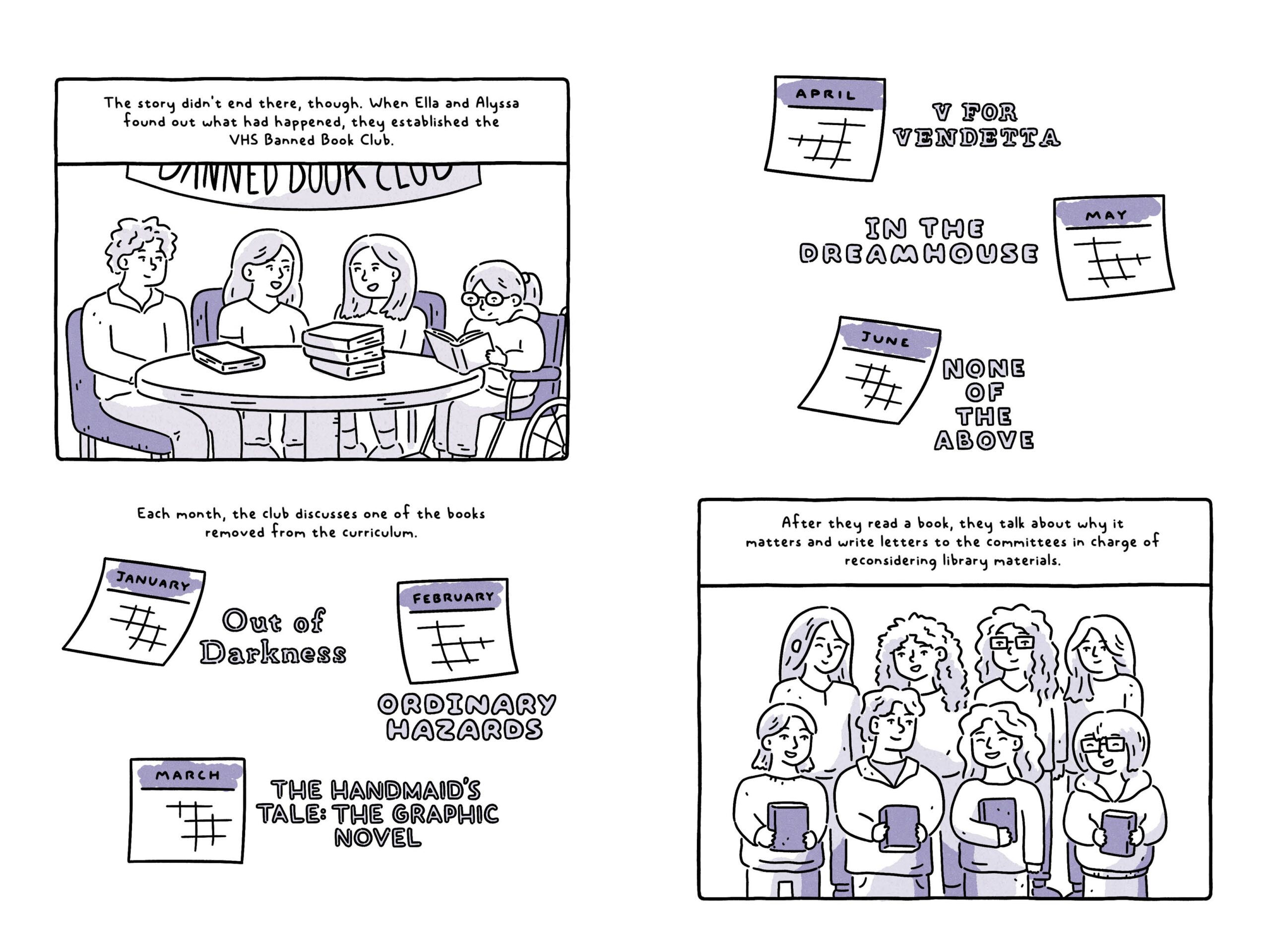

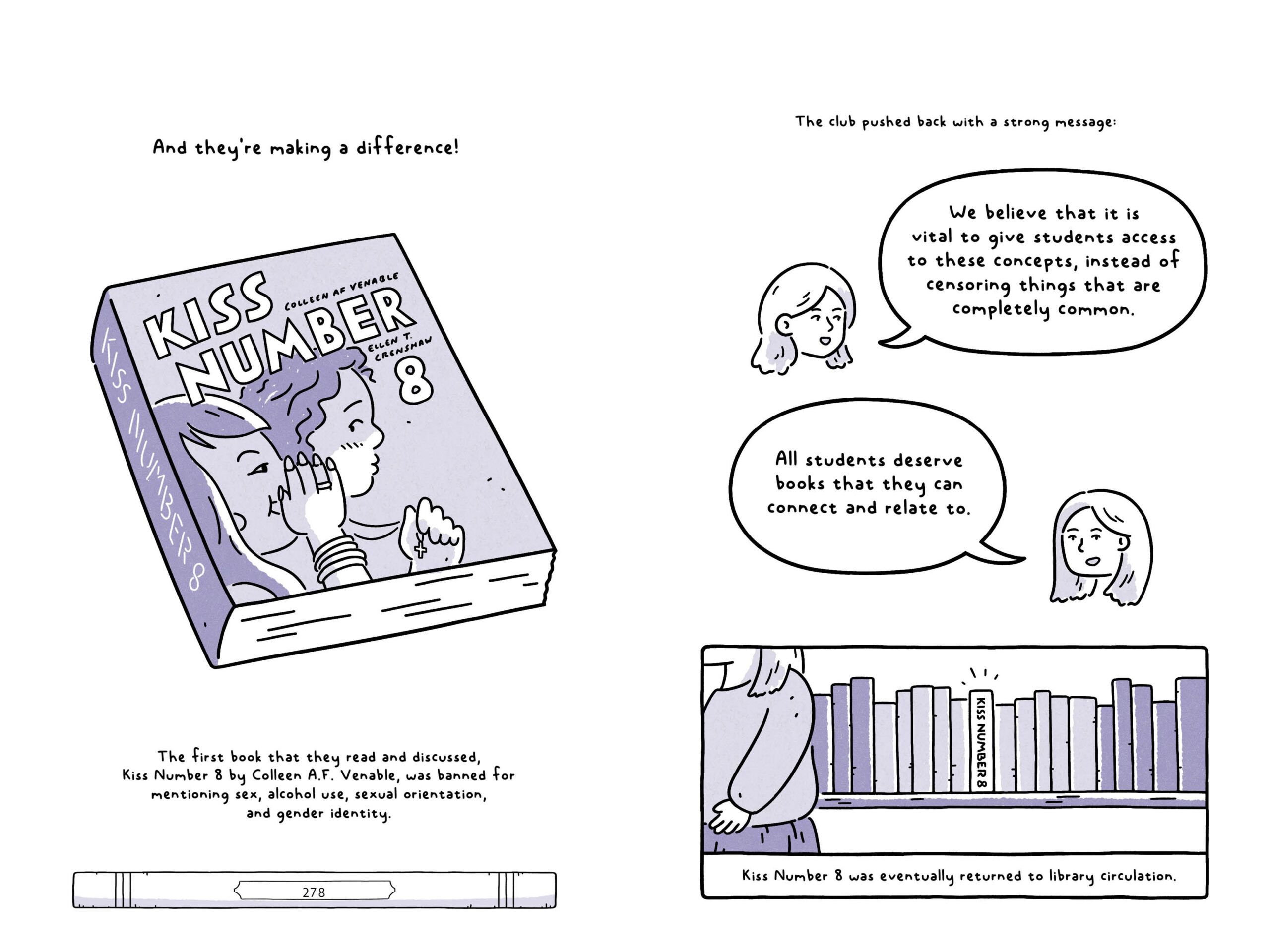

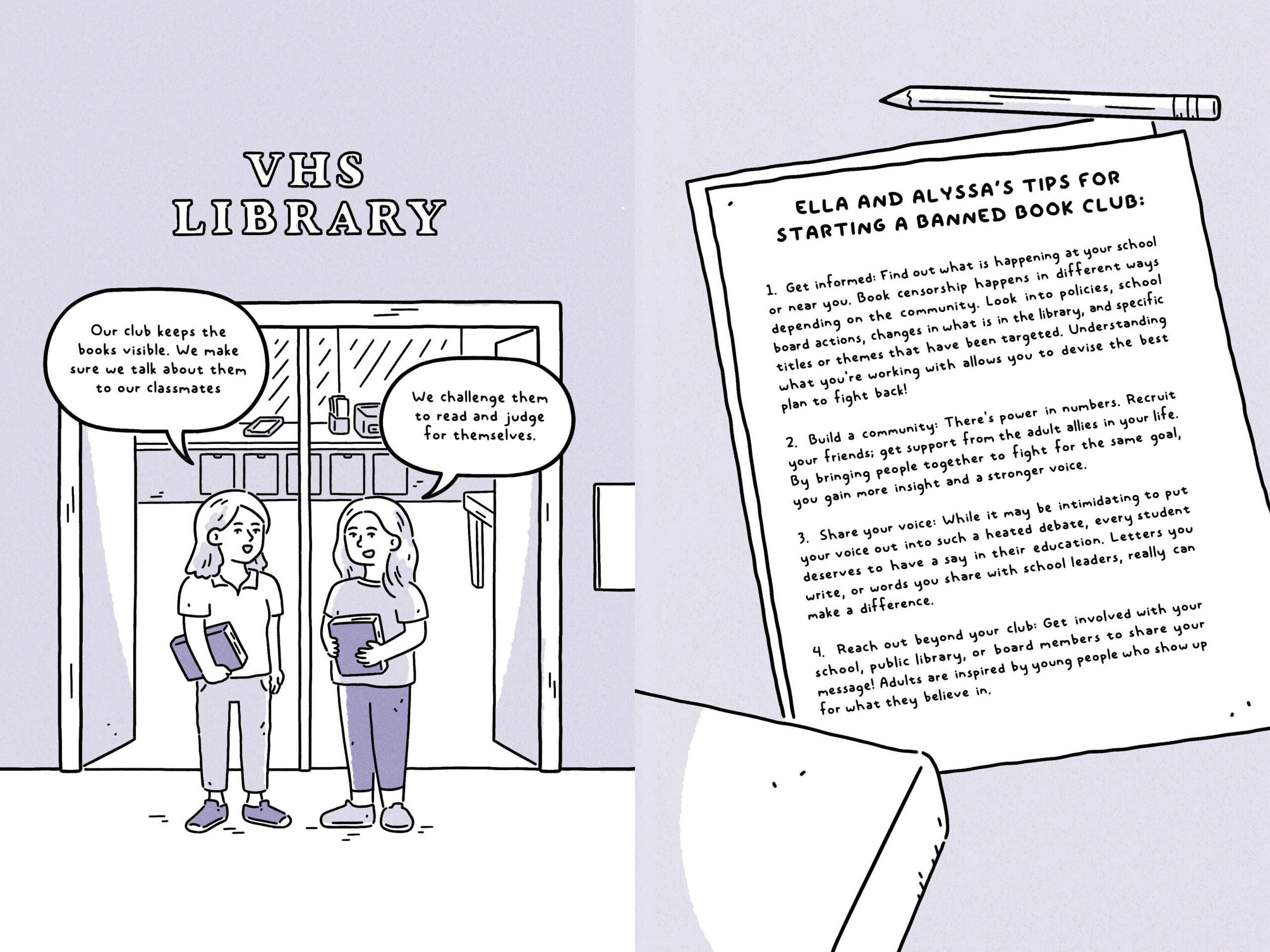

The above comic shares the story of the Vandergrift Banned Book Club, launched in response to book bans in Leander, Texas, schools. The Leander book banners began their campaigns early and, as you might recall, included a grown adult brandishing a pink dildo at a school board meeting.
All of the above examples are but a few of the ways teens have pushed back and reclaimed their space in a world where their perspectives, insights, and education are being stifled in the name of political points. They also illustrate the opportunity for adults to offer them not only encouragement but also support in launching or sustaining freedom to read movements in their own communities.
I’m excited to share that the above comic isn’t just something I found and shared here. It’s part of a powerful anthology being published next March for teens called Banned Together: Our Fight for Readers’ Rights (March 4, 2025). Check out the cover for the collection below.
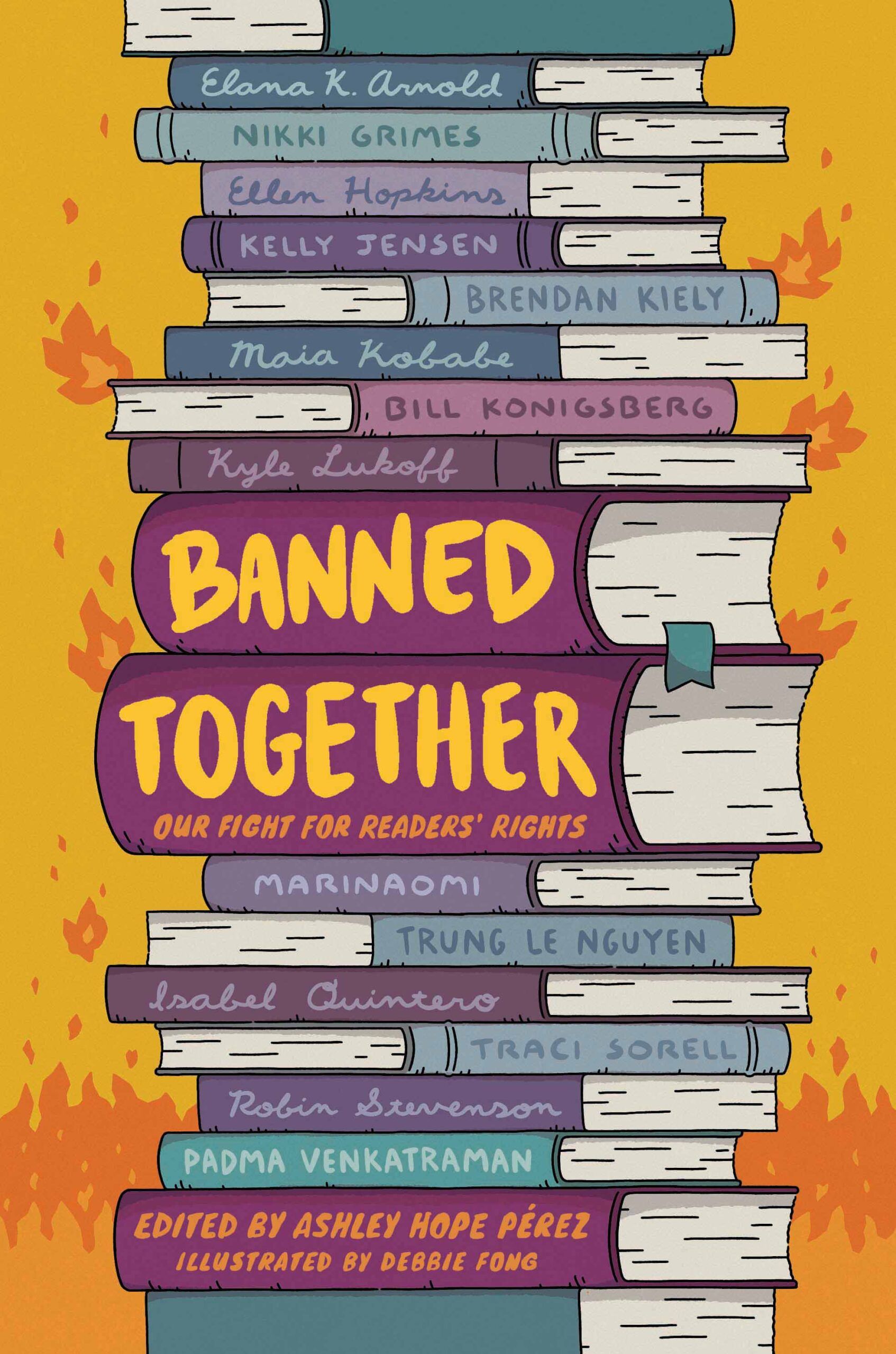

Here’s the official description:
A dazzling YA anthology that spotlights the transformative power of books while equipping teens to fight for the freedom to read, featuring the voices of 15 diverse, award-winning authors and illustrators.
Books are disappearing from shelves across the country.
What does this mean for authors, illustrators, and�most crucially�for young readers?
This bold collection of fiction, memoir, poetry, graphic narratives, essays, and other genres explores book bans through various lenses, and empowers teens to fight back. From moving personal accounts to clever comebacks aimed at censorship, fifteen legendary YA authors and illustrators confront the high-stakes question of what is lost when books are kept from teens.
Contributors include Elana K. Arnold, Nikki Grimes, Ellen Hopkins, Kelly Jensen, Brendan Kiely, Maia Kobabe, Bill Konigsberg, Kyle Lukoff, MariNaomi, Trung Lê Nguy�n, Ashley Hope Pérez, Isabel Quintero, Traci Sorell, Robin Stevenson, and Padma Venkatraman; the collection is a star-studded must-read that packs strength and power into every last word.
Striking illustrations from Ignatz-nominated artist Debbie Fong pair perfectly with the searing, impactful narrative. Resources include tips from the Vandegrift Banned Book Club and other teen activists, as well as extensive recommended book lists, a How to Start Your Own Little Free Library flier, and more.
I’m thrilled not only to know this book will exist. I also got to contribute to the collection and am deeply honored, given the incredible array of other authors involved. My piece talks about the sexual education I got in school, the ways early internet resources were crucial in my understanding of what it is to be feminist, and where and how we use our bodies to rally for the things that we believe in, even when it is our very bodies that disgust and appall decision makers.
As important and necessary as it is to continue creating and sharing information about book bans and the anti-censorship/freedom to read movement online, Banned Together is a vital resource for teens and their adult allies who, well, may need access to a book like this. It’s packed with a variety of styles of writing, including comics like the one above, memoir, poetry, how-tos, and more.
Banned Together: Our Fight for Readers’ Rights hits shelves on March 4, but you can preorder it now wherever you like to order books. Grab a copy for yourself, for your library if you work in one, for your classroom if you have one, and then a copy or two for your favorite teen literary activists.
Four years into this fight, there is one thing that is abundantly clear: we’re nowhere near done and it’s through sharing our stories that we’re able to continue to empathize, support, and bolster the work being done every single day to tamp down this continuously rising censorship tide.
This book is but one more ray of hope along the journey.
Read the original article here


